A website is the digital establishment of any business and therefore, it should be highly functional and well-responsive. A well-optimized website not only showcases the credibility of a company’s online presence but also fetches productive leads for the expansion of business. In 2022, the SEO practice has adopted new strategies and more interactive tools to enhance the ranking potential of a website ensuring greater exposure over the internet. In fact, to remain competitive in today’s ever-evolving SERP landscape, small and medium-sized enterprises need a well-implemented SEO program and structured data in operation. In this article, we will discuss the top Technical SEO Factors that can make a significant difference in search results.
Table of Contents
What is Technical SEO?
So, what exactly does technological SEO signify? Is it the merging of on-page and off-page SEO factors? Well, somewhat, yes, and somewhat, no…
To lay the foundation of robust technical optimization, your website needs to be quickly and easily crawlable and readable for search engines. Technical SEO Factors contribute to enhancing the features of a website to boost the ranking of its web pages in the SERPs. Technical SEO is an element of on-page SEO and it relates to all the optimization activities except content optimization and link building. Technical SEO attributes the website with the fundamental support that provides the best attainable marketing conditions to let your business outshine the search engine results without any impediments.
The approach of Technical SEO ensures that your website adheres to all technical requirements of popular search engines to achieve improved organic rankings. It comprehends vital aspects such as indexing, delivery of content, crawling, and site construction. Technical SEO Strategies are rapidly evolving and becoming more tricky to coordinate with dynamic search engines, which are turning to be more and more sophisticated with the passing of time. Therefore, it can be fairly said that technical SEO is in a state of continuous refinement.
Importance Of Technical Optimization For Websites
Remember a website can look good with excellent content but if the technical SEO is messed up, the website will not rank in SERPs. Google and other search engines strive to deliver the best attainable results for the users’ queries. Hence, Google’s robots crawl and assess web pages on a number of unprecedented factors. At the most fundamental level, the algorithm of search engines initiates the operations of finding, crawling, rendering, and indexing the web pages of a site.
But indexing is not enough, your site needs to be completely optimized to achieve perfection in technical SEO aspects. The imperative aspects of the technical SEO checklist are- free of duplicate content, mobile-friendliness, fast-loading of webpages, and so on. Technical SEO simply makes it easier for Google to access your content leading to high ranking potential.
Technical SEO further serves the other way around: if you make severe technical errors on your site, they can obligate penalties for you. For instance, if you add a trailing slash in the incorrect place in your robots.txt file by mistake, your entire website will be blocked for search engine crawling. So, how can one address the matter of Technical SEO properly? You need to take these top Technical SEO Factors into account- Canonical tags, XML sitemaps, Structured Data, Hreflang, 301 redirects, Site architecture, Javascript, 404 pages, URL structure, Thin content, and Duplicate content. In this guide, we will elaborate on all of these matters-
Top Technical SEO Factors
1. Schema Markup
Choose the markup that has the most impact
“How to” markup
Rich snippets are one of the most powerful SEO tools available, and if you want to get the most out of them, you need to know the most common content types. One of the most popular content types is “how to” markup. This type of snippet can be used to help search engines better understand your content and display it more prominently in search results.
It can also help search users quickly identify your content as a tutorial or “how to” article. When done right, “how to” markup can boost traffic to your website and help you stand out in a crowded landscape. All you have to do is add the appropriate microdata to your content and the search engine will do the rest. With a few simple steps, you can increase your visibility and make sure your content is seen by the right people. Try it out today and see the results for yourself!
Product type markup
Product type markup is one of the most useful rich snippet content types. This content type is used to provide additional information about products on your website. This data includes product descriptions, prices, availability, and reviews. All this information helps search engines understand what products you’re selling and better index them in their search results.
With product type markup, you can also add a product image and star ratings to your search results, making them stand out from the crowd. This can help attract visitors to your site and drive more sales. Plus, using product type markup is easy. All you need to do is add a few lines of code to your website, and you’re all set.
Reviews markup
Review markup is also rich in snippets. content types and it can be a great way to boost your website’s visibility in search engine results. Review markup allows you to display ratings and reviews of your products or services right in the search engine results page. This can be a great way to draw more attention to your website and increase click-through rates.
Review markup also allows you to include additional information, such as the author of the review, the date the review was published, and images. This can help give potential customers a better idea of what to expect from your business.
FAQ markup
Rich Snippets are an exciting way to improve the visibility of your website in search engine results and drive more traffic to your site. A Rich Snippet is a type of structured data markup that provides additional information about your page to search engines. One of the most common types of Rich Snippet is the FAQ Markup.
This allows you to include a list of frequently asked questions (FAQs) on your page, which will then be displayed in search engine results. This can help to answer potential questions that users might have, which can improve their experience on your page and encourage them to click through.
This can also help to increase your page’s click-through rate (CTR) and, ultimately, its ranking in search engine results. In addition to FAQs, there are other types of Rich Snippet content, such as reviews and ratings, that can also be used. So, if you’re looking to give your website an SEO boost, Rich Snippets are an effective way to do so.
This is because your site could perform better with Google ranking. Get a detailed execution plan for how we can achieve your SOE goals.
Grow Traffic Now2. Anchor Text
Anchor text is one of the most important components of technical SEO. It’s the clickable text in a hyperlink, and SEO best practices dictate that anchor text be relevant to the page you’re linking to. That means you should avoid generic text like “click here” and instead use something more descriptive. For example, if you were linking to a page about SEO, you could use anchor text like “search engine optimization” or “SEO services”.
By using descriptive anchor text, you’re giving search engines like Google more information about what the link is about, which helps them determine the relevance of the page. Plus, using descriptive anchor text makes it easier for users to know where the link will take them. So if you want to make sure your site is optimized for search engines, anchor text should be a top priority.
3. Hreflang tags
Hreflang is an amazing HTML attribute that can be used to boost your website’s performance and reach. With this powerful tool, you can specify the language and geographical targeting of a webpage. This is especially beneficial if you have multiple versions of the same page in different languages. By using the hreflang tag, you can ensure that each version of the page is being seen by the right audience. This can lead to a significant increase in website traffic.
Plus, it helps improve your SEO as search engines will be better able to crawl and index your content. In addition, using hreflang can reduce duplicate content issues and create a better user experience overall. With hreflang, you can make sure your website is reaching the right people, in the right language, and from the right place — making it an essential tool for any website.
4. Breadcrumb Navigation
Breadcrumb navigation is an incredibly useful feature on websites. It allows users to easily “trail” through the site and quickly click back to a previous page or several steps back. This feature is great for allowing users to quickly retrace their steps and find their way back to the page they were on without any hassle.
Breadcrumb navigation also allows for easy navigation between pages and sections. By following the “breadcrumb trail”, users can quickly jump between pages without having to manually type in the URL or remember the exact page title. This makes it much easier for users to find their way around a website, making their experience much more enjoyable. Breadcrumb navigation is an invaluable tool for user experience, and it can make a huge difference in the success of any website.
5. Mobile-First Indexing
Google’s mobile-first indexing is a game-changer for SEO. With this indexing method, Google predominantly uses the mobile version of a site’s content for indexing and ranking. This means that if your website is not optimized for mobile devices, your SEO ranking could suffer. It’s also important to note that the content is crawled with the smartphone agent, so if your content is not optimized for mobile, it won’t be completely indexed by Google.
This is critical in automotive SEO services since consumers who want specific car components are frequently on the phone and eager to place orders for new parts as quickly as possible.
Fortunately, there are steps you can take to ensure that your website is mobile-friendly and optimized for mobile-first indexing. This includes ensuring that your content is optimized for mobile devices, having a responsive design, and compressing images. It is also important to look at the loading speed of your site, as it affects the user experience and could affect your ranking. By taking these steps, you can improve your SEO ranking and ensure that your content is properly indexed and ranked by Google.
6. Accelerated Mobile Pages
Accelerated Mobile Pages (AMP) is an open-source project created to improve the performance of web pages for mobile devices. This project was spearheaded by Google and provides a framework to help developers design pages that are fast, responsive, and optimized for mobile devices. With AMP, web pages are stripped down to their essential elements, making them load faster and making them more workable on mobile devices.
This is a huge benefit for those who are trying to reach their audiences on mobile devices, as it can make a huge difference in page load times and user experience. AMP is also important for technical SEO, as it can help web pages rank higher in search engine results. By optimizing pages for speed, AMP can give businesses an edge when it comes to SEO.
Overall, Accelerated Mobile Pages is an incredibly valuable tool for web developers and for businesses looking to reach their audiences on mobile devices.
7. Use pagination.
Pagination is an exciting process that can make a big difference in the way we read print or digital content. By separating content into discrete pages, it becomes easier to navigate and comprehend complex material. This can be a huge benefit for readers looking for specific information, as it allows them to quickly find what they need without having to search through a long document.
It also helps to break up text into manageable chunks, making it more accessible to a wider range of readers. In addition, pagination can be used to add visual interest to documents, making them more visually appealing.
For example, it can be used to create an attractive layout or insert illustrations to emphasize important points. All in all, pagination is a great way to improve the reading experience.
8. Check your SEO log files.
SEO log files should never be overlooked when it comes to SEO. These files contain valuable information about how users find and interact with your website. By analyzing these log files, you can get insights into how your SEO efforts are performing. You can also spot any areas that need improvements and make changes to boost your ranking.
It’s important to check your log files regularly to ensure that your website continues to meet Google’s standards and that your efforts are paying off. This can include looking for error messages, checking page speed, and making sure your URLs are properly formatted.
All of these are important technical SEO factors that can affect your ranking. So if you want to succeed with SEO, don’t forget to check your log files! It could be the difference between success and failure.
9. Server Performance
Server performance monitoring is an important process for ensuring the smooth running of any server. It gathers metrics about the server’s operations, such as the amount of CPU time used, the amount of disk space consumed, and the number of processes running. By monitoring these metrics, you can detect any problems or anomalies in the server’s performance. This allows you to take corrective action quickly before any issues become full-blown problem.
Server performance monitoring also helps you identify any potential bottlenecks or problems that could impact the server’s performance. For example, if you notice that the CPU is often running at high levels, you can investigate the cause and take steps to optimize it. Server performance monitoring also helps you plan ahead and anticipate any future issues.
By tracking the server’s performance over time, you can detect any trends or changes that could indicate a problem. This allows you to plan ahead and take corrective action before any problems become serious. In short, server performance monitoring is an essential part of technical SEO Factors
10. JavaScript Rendering
JavaScript SEO is a game-changer for web developers and SEO professionals alike. It’s a part of Technical SEO (Search Engine Optimization) that seeks to make JavaScript-heavy websites easier to crawl, index, and rank in search results.
By properly implementing JavaScript SEO, web developers can ensure that search engines can access and index all of the content on their websites, regardless of whether it is dynamically generated using JavaScript or not.
This helps to improve the visibility of the website in the search engine rankings, resulting in more traffic and leads. JavaScript SEO also offers a number of other benefits, such as improved site speed, better user experience, and reduced server load. With JavaScript SEO, web developers can make sure their websites are properly indexed by search engines and are optimized for great user experience and better search engine rankings.
11. Orphan Pages
Orphan pages are a hidden gem for website owners. Not only are they easy to create and manage, but they can also help you boost your website’s visibility in search engines. By creating orphan pages, you can create targeted content that will help drive traffic to your website. Plus, they give you the ability to link to internal pages without needing to create more navigational links.
This makes it easier to keep your website hierarchy clean and organized. And since search engines view orphan pages as independent pages, they’re more likely to index them and give them a higher ranking, helping you get more visibility in search results. So if you’re looking for a way to drive more traffic to your website, orphan pages are definitely worth considering.
12. keep redirects minimum
When you decide to redirect traffic from one page to another, you’re paying a price. That price is crawl efficiency. Redirects can slow down crawling, reduce page load time, and make it more difficult for search engines to index your site. But if you keep them to a minimum, you can still benefit from the power of redirects. Redirects can be a great way to direct visitors to the most up-to-date content, keep your website organized, and ensure that users are able to access the content they’re looking for. They can also help you keep your website secure by preventing malicious actors from accessing sensitive information. To make sure your redirects are working correctly, it’s important to use 301 redirects and avoid redirect chains. If you’re able to keep your redirects minimal, you can reap the benefits without sacrificing crawl efficiency.
13. Site Structure and Navigation
It is one of the important factors of the technical SEO checklist and the structure of your website is the cornerstone of every technical SEO campaign. Because of the badly built site layout, many crawling and indexing problems occur. Anything you do to customize your web, from URLs to sitemaps to using robots.txt to block search engines from those sites, is influenced by the layout of your site. So if you get this step right you don’t need to worry as Google will index all of your site’s pages. Let’s get started-
Use a Flat, Organized Site Structure
The structure of your site determines how all of the sites are arranged. In general, you want a “flat” structure. To put it another way, the site’s pages can all be just a few links apart. Google and other search engines will easily crawl all of the site’s pages with a flat layout.
For a traditional website, this isn’t a big deal. But what about a 250k product listing eCommerce site? The importance of flat design cannot be overstated. You want the system to be well-organized as well. To get an overall view of your website structure, use Ahrefs’ “Site Audit” tool. This is extremely beneficial but not particularly visually appealing. Video Site Mapper will let you see how the sites are connected in a more visual way. It’s a free app that lets you see the site’s structure in real-time.
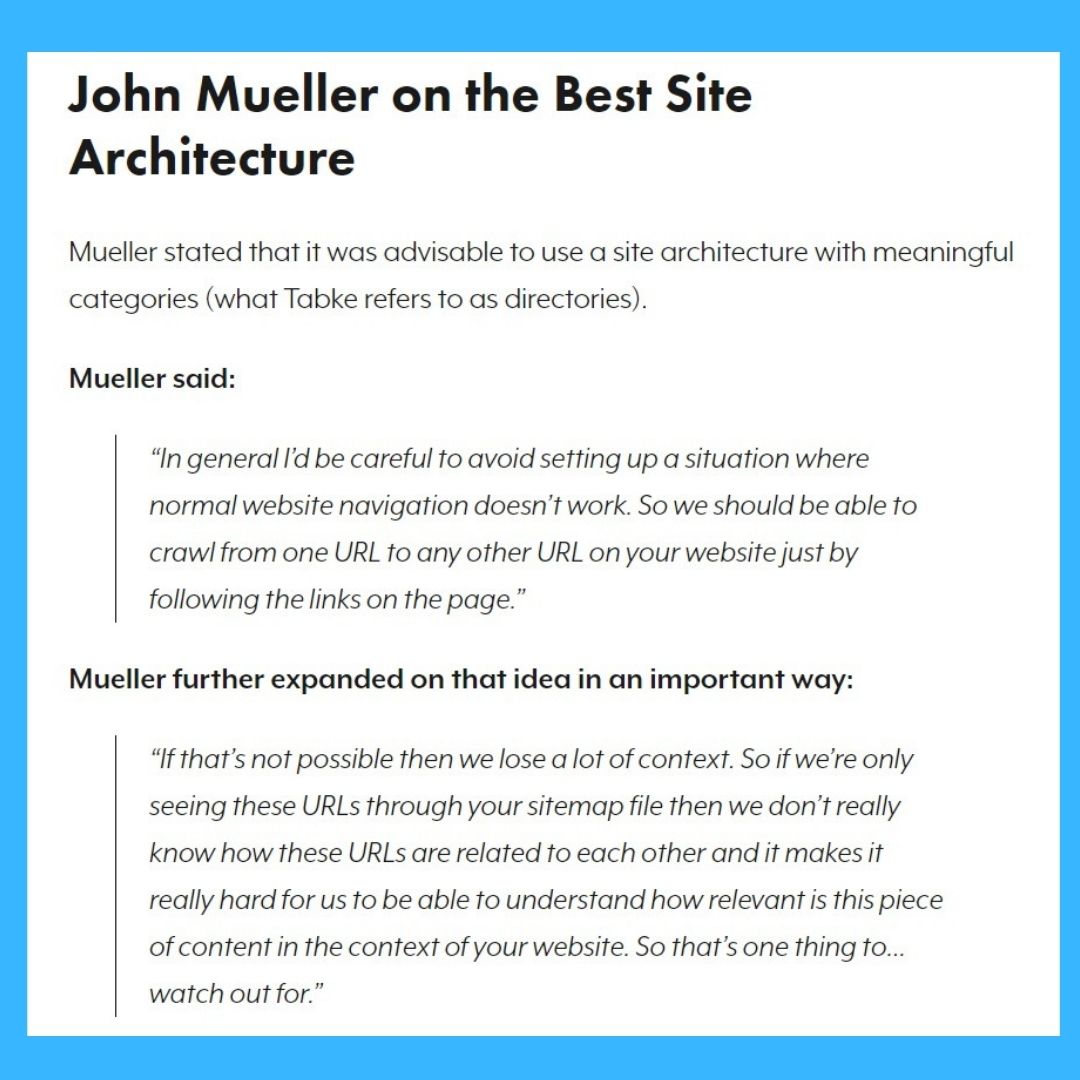
Consistent URL Structure
There’s no reason to overthink the construction of the URLs. This is especially dependable if you run a small website (like a blog). However, you do want your URLs to have a logical, coherent structure. This is actually one of the determinant Technical SEO Factors that assist users in determining their location on your website. Organizing the sites into various categories often provides Google with more information for and page in that category.
The “/hub/SEO” subfolder, for example, is used on all pages on Backlinko SEO Marketing Hub to let Google know that they are all part of the “SEO Marketing Hub” group. This seems to be successful. You’ll find that when you Google “SEO Marketing Hub,” Google has site links in the search. Many of the pages connected to these site links are, as you would imagine, located inside the hub.
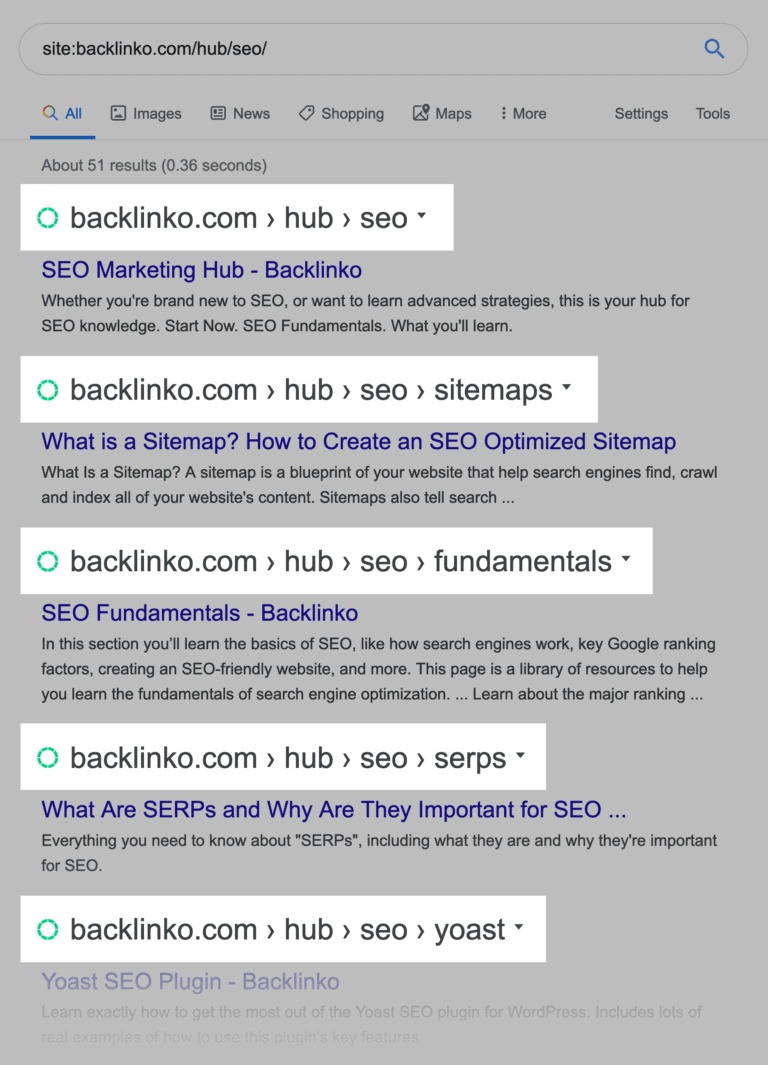
Breadcrumbs Navigation
Breadcrumbs navigation is well-known for its SEO benefits. This is because breadcrumbs add internal links to the site’s categories and subpages automatically. This contributes to the stability of your website’s architecture. Not to mention the fact that in the SERPs, Google has converted URLs into breadcrumb-style navigation. We consider using breadcrumbs navigation where it makes sense.

Structured Data Markup
Among all Top Technical SEO Factors, Structured data-rich snippets are another aspect of technical SEO to discuss. Structured data assists search engines in better understanding your website, content, and even your business. Certainly, Google can determine the type of resource you have by looking at its content and on-page optimization, but rich snippets will take it a step further and greatly assist search engines.
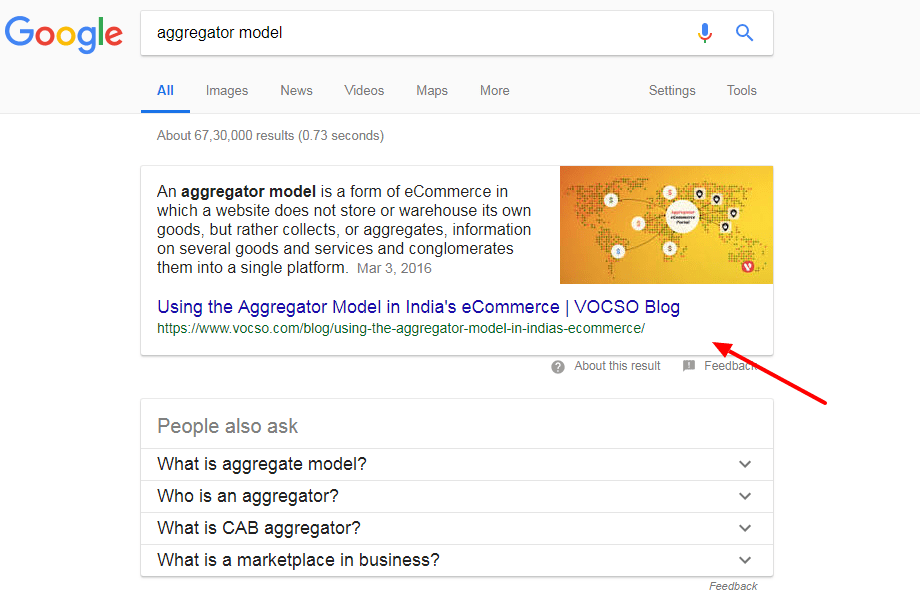
The standardized data notifies the search engines of what type of goods an eCommerce store offers or which recipes a blog is having. It will also enable you to have a wealth of information about the items you’re selling or blog recipes you are having on your site. Since you can include this information in a specific format (described on Schema.org), search engines can quickly locate and interpret it. It allows them to put the content into context.
What are rich snippets, and how do you use them? When you type in a particular question, rich snippets appear in the search results. Rich snippets show you things such as the star ranking and the number of ratings.
For example, you can build a Schema graph for your web using plug-ins, and you can use free structured data content blocks for your How-to and FAQ content. Structured data will provide you with more benefits than just a deeper interpretation by search engines. It also qualifies your material for rich results, which are those gleaming results with stars or additional information that stands out among the search results.
14.Crawling, Rendering, and Indexing
Before doing SEO for a website everyone must understand how Google search works so you can get maximize benefits from your SEO campaign. While talking about Technical SEO Factors in 2022, Crawling, Rendering and Indexing are the crucial matters that need to be addressed. A technically optimized website is expedient for users and responsive to crawl for search engine robots. A strait-laced technical setup allows search engines to recognise what a site is about and it checks interference provoked by, for example, duplicate content. Furthermore, it stops visitors, search engines, into dead-end routes by corrupt links. Let’s look into some essential aspects of a technically optimized website and its importance in the indexing process.
Google Search Console Coverage Report
Your first consideration is the “Coverage Report” in the Google Search Console and this report informs you whether Google is sufficiently indexing or rendering pages as per your expectations.
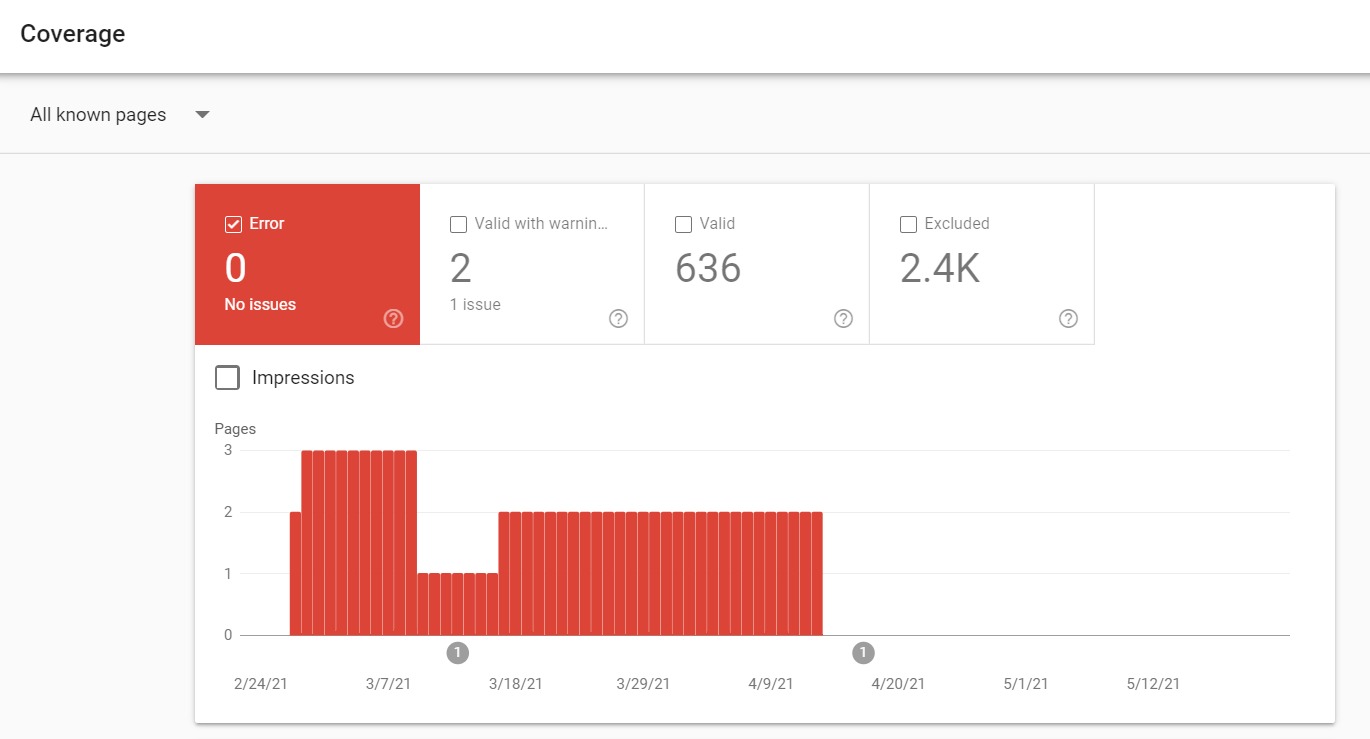
Netpeak Spider
Netpeak Spider is a crawling software for website audits. The program allows you to analyze the site and find all possible errors that may affect its operation and optimization for search engines, with a view to their further elimination.
The service allows you to conduct a technical assessment of the resource by more than 80 parameters. The program also allows you to find links that lead to non-existent pages, and segment the received data into convenient reports. There are also functions that can generate information on checking a company under its own brand.
Screaming Frog
In the technical SEO checklist, Screaming Frog is the most famous crawler in the world for a reason: it’s fantastic and serves a great purpose. It allows you to run a complete re-crawl after you’ve solved some problems detected in the Coverage Report.
Ahrefs Site Audit
Ahrefs has a sneaky good SEO site audit tool. What we like most about this feature is that you get info on your site’s overall technical SEO health. Ahrefs site audit health score offers an in-depth insight of page loading speed across your entire site, performance, and issues with your site’s HTML tags.
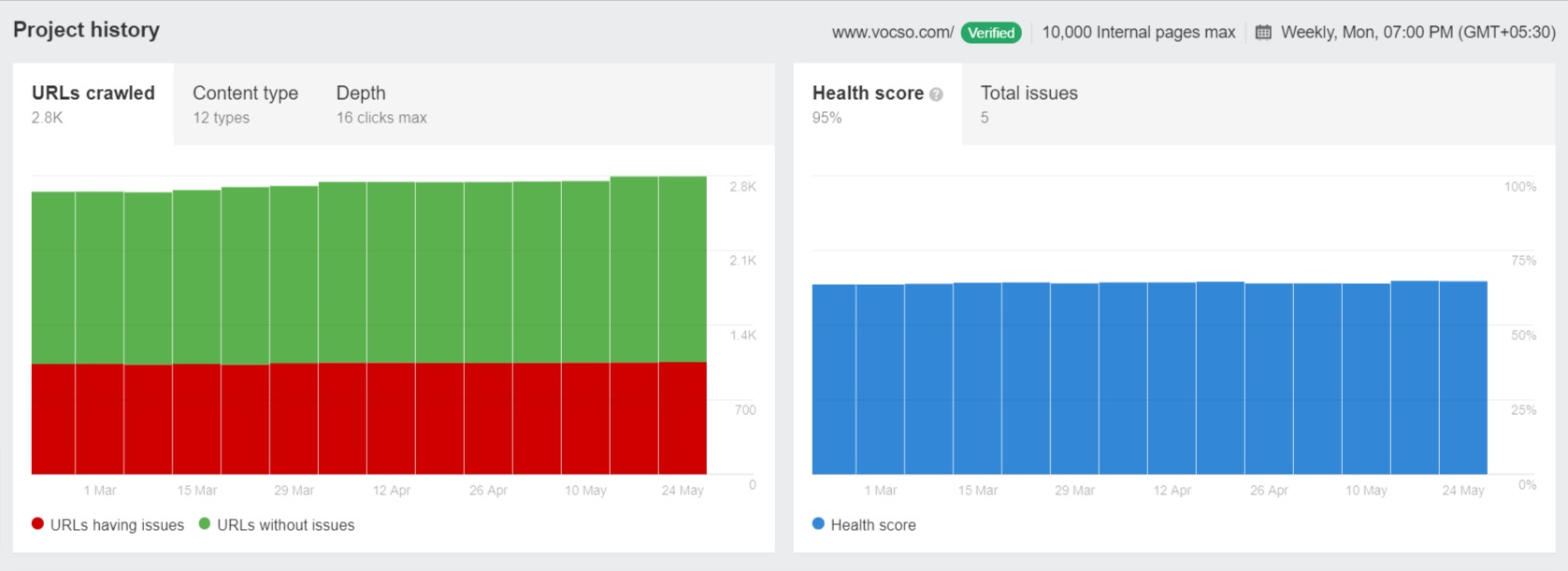
Use an XML Sitemap
The majority of users had no trouble getting their webpage indexed. Deep pages (pages that are multiple connections from the homepage) are the ones that appear to trigger issues. In most cases, a flat architecture avoids this problem from arising in the first place. After all, your “deepest” website is just 3-4 clicks away from your home page.
In any case, nothing beats a good old-fashioned internal connection to a single deep page or group of pages that you want to be indexed. Especially if the page from which you’re linking has a lot of authority and is frequently crawled. Among all Technical SEO Strategies, XML sitemaps are determinant factors.
After external and internal links, XML Sitemaps are the second most relevant source, according to Google. Go to the Search Console’s “Sitemaps” feature to double-check that your sitemap is working properly. This will show the sitemap that Google has for your website.
Google Search Console (GSC) “Inspect”
Is there a URL on your blog that isn’t being indexed? The URL Inspection Tool in Google Search Console will help you figure out what’s going on. It will not only inform you that a website isn’t being indexed, but it will also show you how Google makes indexed pages. That way, you can double-check that Google can crawl and index every single piece of content on that page.

Robots.txt file
The robots.txt file can be used to guide robots around your website. It’s an effective weapon among Technical SEO Factors and it can be used with caution. As we discussed at the outset, a minor blunder could prohibit robots from crawling (critical sections of) your web. In the robot.txt format, people often accidentally block their site’s CSS and JS data. These files contain the code that shows browsers how exactly the web might look like. Search engines won’t be able to tell if the site is working properly if those files are blocked. Overall, if you want to understand how robots.txt works, we suggest diving deep into it. Alternatively, you could hire a developer to do it for you!
Perform a Google site search
There is a simple way to see how well Google indexes your website when it comes to search engine indexing. Type “site:yourwebsite.com” into Google search and it will reveal to you all pages indexed by Google, which you will use as a guide. A word of warning, though: if your site isn’t at the top of the list, you may be facing a Google tax, or you’re preventing it from being indexed.

15. Thin and Duplicate Content
In all Technical SEO Factors in 2022, the significance of unique content is huge. Maintaining the authenticity and the originality of your site’s content is imperative to avoid duplicate content penalties. Duplicate content can appear on any site, especially if your CMS generates several copies of the same page with separate URLs, and it can harm your site’s overall rankings. Therefore, you need to look for thin and duplicate content and fix the error on time. Here are the best possible ways:
Use an SEO Audit Tool to Find Duplicate Content
There are two tools that are particularly effective at detecting duplicate and thin material. The Raven Tools Site Auditor is the first. It looks for duplicate material on the website (or thin content). It also informs you which pages need to be changed. The Ahrefs web audit tool, which also has a “Content Quality” feature, can show you whether your site has duplicate content across several sites. These applications are designed to help you find duplicate material on your own website.
Pages that steal material from other sites are often referred to as “duplicate posts.” It is one of the great drawbacks of Top Technical SEO Factors. Copyscape’s “Batch Search” functionality is a good way to double-check that the site’s content is unique. You must upload a list of URLs and check to see if the content exists on the internet. If you come across a piece of text on another website, look for it in quotes.
If your page appears first in the search results, Google considers you the page’s original author. You’re now ready to go.
Noindex Pages That Don’t Have Unique Content
The majority of websites would have pages of duplicate material. That’s fine. As such duplicate content pages are indexed, this becomes a challenge. What is the solution? To those pages, add the “noindex” tag. The noindex tag instructs search engines such as Google and Bing not to index the page.
Using the GSC’s “Inspect URL function,” double-check that your noindex tag is set up correctly. Put the URL in the box and press “Test Live URL.” If Google is still indexing the page, you’ll see a message that says “URL is open to Google.” This indicates that your noindex tag is incorrectly configured.
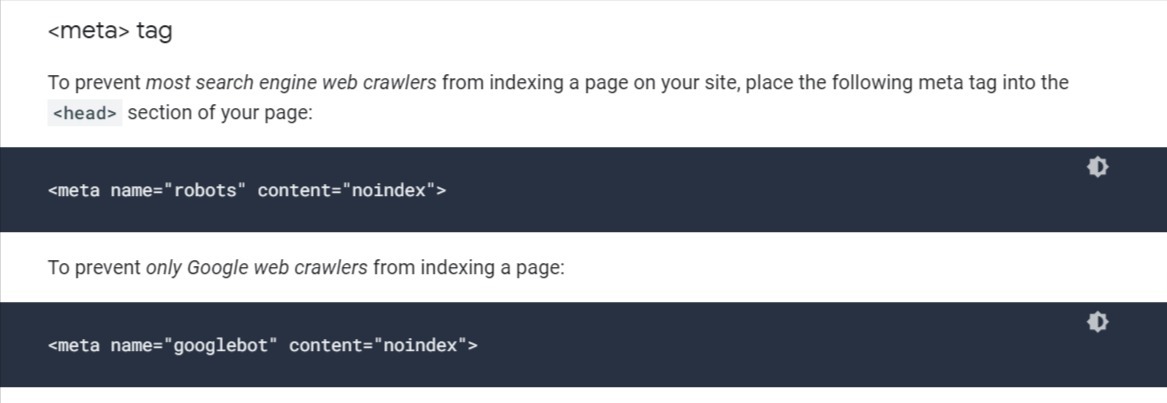
If you see a message that says “Excluded by ‘index tag,” the noindex tag is working. It will take a few days or weeks for Google to re-crawl the pages you don’t want to be indexed, depending on your crawl budget. As a result, we recommend reviewing the Coverage report’s “Exclude” tab to ensure that your noindexed pages are being omitted from the index. You can also prevent search engine spiders from crawling the page entirely by putting a block in your robots.txt file for each of their crawlers.
Use Canonical URLs
The no index tag should be applied on most sites that have duplicate material on them. Is it possible to substitute redundant material with unique content? In the technical SEO checklist, there is a third alternative, however: canonical URLs. Canonical URLs are ideal for pages with very similar content, but slight variations between them.

Consider the case of an eCommerce site that sells water bottles. You also have a stock listing dedicated to school bottles. Per scale, colour, and variation will result in various URLs depending on how the site is set up. Fortunately, you can tell Google that the vanilla edition of your product page is the “key” one by using the canonical suffix. All of the others are variations on the theme.
16. Improving your pagespeed
Increasing the speed of your page is one of the imperative Technical SEO Strategies that can directly affect your site’s rankings. Improving your site’s loading speed does make a big difference in your organic traffic.
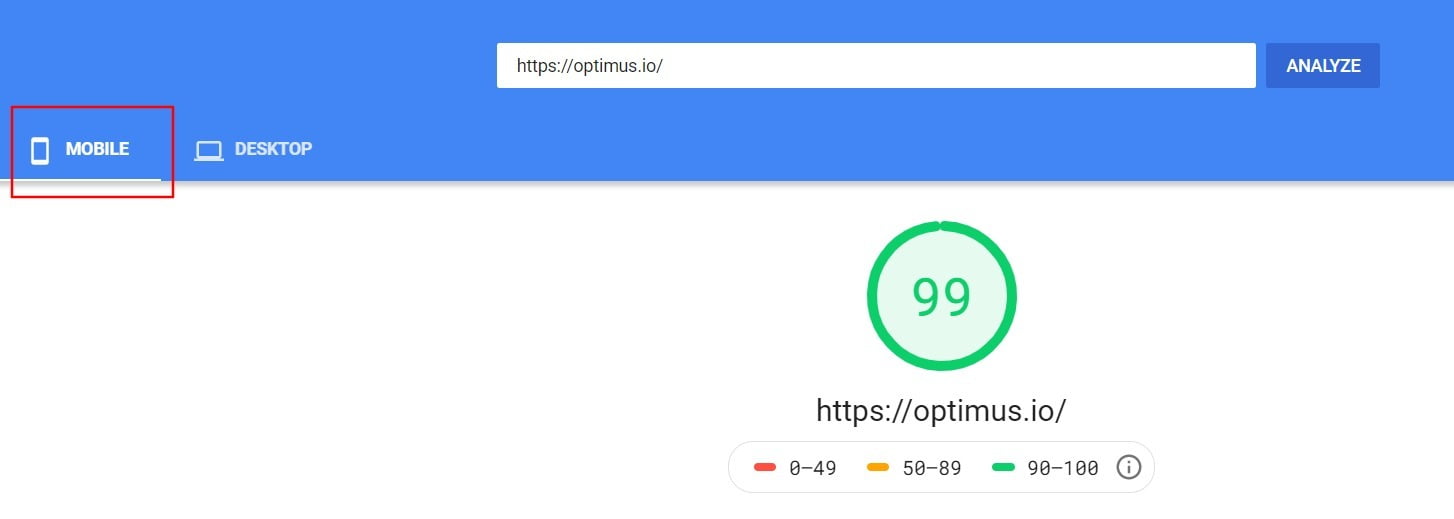
Reduce Web Page Size
When it comes to speed factors, CDNs, cache, lazy loading, and minifying CSS are all prevalent options. In reality, the overall size of a page correlated with load times more than any other factor in our large-scale page speed analysis. You need to compress your photos and site cache to the max for the ultimate optimization. However, if your pages are big, they can take a long time to load. Our pages appear to be massive due to our heavy use of high-resolution images. Reducing page weight on your website is must to make it faster for your website users.
Test Load Times With and Without a CDN
Testing webpage load time is one of the important technical SEO Factors in 2022. CDNs were linked to slower load times, which was one of the most unexpected results from our page speed analysis. This is most certainly due to the fact that certain CDNs aren’t configured properly. If your site makes use of a CDN, we suggest running a speed test on webpagetest.org with the CDN turned on or off.
Eliminate 3rd Party Scripts
A page’s load time is increased by 34 milliseconds for any third-party script it contains. Any of these scripts (such as Google Analytics) are almost certainly needed. However, it never hurts to take a look at the third party site’s scripts to see if there are any that you can remove.
Minifying CSS & JavaScript Files
Detecting bloated CSS code, as well as bloated JavaScript, will make your site load faster. Many WordPress themes have bloated CSS and JavaScript, which may result in load times of 2-3 seconds or less if time was taken to properly minify them. Many website implementations should have one CSS file and one JavaScript file, at the very least. The absence of these scripts, when correctly coded, reduces server requests, possible bottlenecks, and other problems. You should minify your CSS and JavaScript resources to perform your website faster.
Compressing images and videos
A key optimization aspect to get correct is identifying photos and videos that are large in file size and cause changes in page load time. This isn’t the be-all and end-all of optimization, but if done correctly, it will result in a significant reduction in site speed. Find out the best ways to reduce images and videos file sizes for the web
Cleaning up site code, and Reducing scripts, plugins, and redirect chains
In the technical SEO checklist, cleaning up site code, and Reducing scripts, plugins, and redirect chains are some of the important responsibilities. The process of writing code in such a way that it clears up leftover data structures and other discarded materials from memory and the filesystem is known as code cleanup. It’s often used interchangeably with refactoring code, which entails making the source code easier to learn, execute, and revise. You should still review the hierarchical order, grammar, and spelling of your HTML, CSS, JavaScript, jQuery, and other programming languages, whether you’re hand-coding your website or using a code/WYSIWYG editor.
No matter how carefully you create a site, the HTML in your pages can unwittingly become cluttered with needless tags, needless markup, and potentially harmful code that can damage the appearance and functionality of your web pages. Many of these errors occur when you paste text from other sites onto your pages, such as a Word or Excel document, a web page, an email, or another code editor or programme. Other errors may be the result of a simple typo or coding errors that occurred behind the scenes when moving items across the page using click-and-drag or cutting-and-pasting.
Finding empty hyperlinks on the website is a typical code issue that certain code editors left in the code for no specific cause when you switch a connection from one location on the page to another. These empty links are just pieces of code that don’t contain any text, such as, so they won’t show up in the browser.
Such extra code may go unnoticed during the development process of your site, but it will almost always show up during the testing phase before publication. Be sure to tidy up the code at least twice during the building process to reduce coding mistakes on your web pages: Clean up the code after you’ve finished creating your master page(s) or template(s) before moving on to the rest of the site’s pages. Prior to the web launch, do another round of cleaning on all of the site’s pages at the conclusion of the construction process. You can take advantage of any special tools for the cleanup process.
17. HTML Errors / W3C Validation
Among all Top Technical SEO Factors, correcting HTML errors and W3C validation essential one. Correcting HTML mistakes and W3C validation on their own will not improve your score, and creating a truly W3C valid platform will not benefit you.
Fixing these errors will lead to improved processing in a variety of browsers. These improvements will greatly enhance page speed.
However, this is done on a case-by-case basis. Using these things of its own would not immediately boost the site’s score. In reality, it is primarily a contributing factor, suggesting that it will facilitate the improvement of the primary factor – site speed. Here’s how you can check HTML errors and W3C validation issues:
- The W3C validator at W3.org will assist you in identifying and correcting HTML errors.
- Often use the DOCTYPE that corresponds to the language of the website being validated by the W3C validator.
- You’ll have errors all over the place if you don’t. For eg, you can’t modify DOCTYPES from XHTML 1.0 to HTML 5.
18. Ensure your site is mobile-friendly
Your site must be mobile-friendly to refine your current Technical SEO Strategies and SERPs. At the end of 2018, Google said that mobile-first indexing was used by more than half of the web pages of Google search results. Google has revealed that mobile-first indexing will be the baseline on all emerging web domains as of July 1, 2019. Because of how prevalent mobile is today, it should be used in the audits. This is a relatively simple SEO feature to review using Google’s Mobile-Friendly Test: simply enter the website’s URL and get useful insights into its mobile state. Here are some important things to check for assessing mobile-friendliness-
- Any videos you have on your pages should load quickly and be consistent with any device that your visitors might use.
- Content scrollability – this feature allows the content to scroll on any mobile screen. Do not let the users click from one button to the next – this is incredibly inconvenient and degrades the user experience.
- Your style should always be mobile-friendly. Never, ever, ever use the mobile.domainname.com website. There is no need for any website in 2019 to have a smartphone. or m. subdomain, unless there is a political issue at the workplace. Any website should be fully sensitive and use the appropriate stylesheets.
- AMP should not be included. In a number of recent case studies, we found that eliminating AMP actually boosted traffic rather than triggering traffic problems. Check for AMP coding implementations to ensure that the coding does not happen. If it does, advise the customer to get rid of it.
If you are looking for some effective mobile-friendly solutions for site optimization consider increasing font size, embedding youtube Videos, compressing images, and other media.
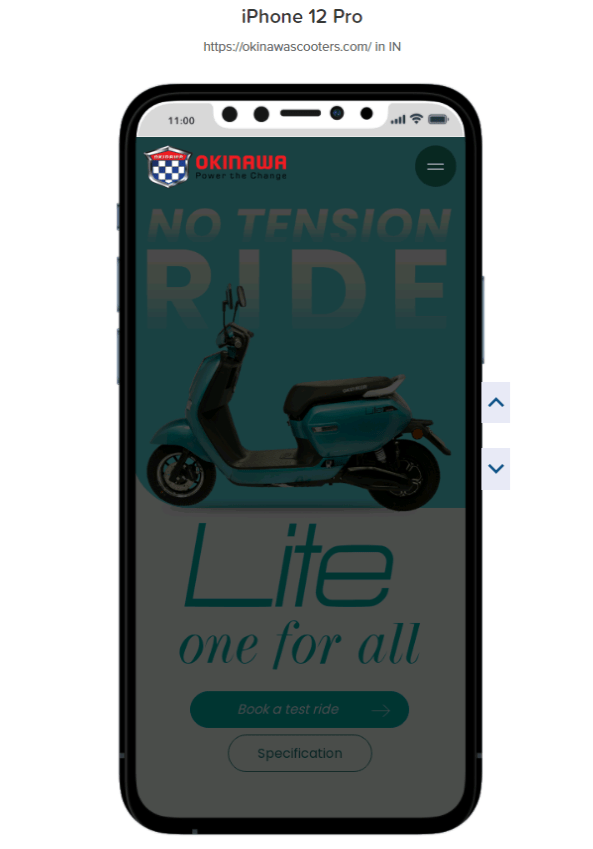
19. Audit for keyword cannibalization
In the technical SEO checklist, performing an audit for keyword cannibalization is a primary task. Search engines can become confused as a result of keyword cannibalism. If you have two sites in keyword competition, for example, Google will have to determine which is the best. As a result, each page would have a lower CTR, authority, and transaction rates than a single combined page.
In local SEO, one of the most popular keyword cannibalization drawbacks is optimizing the home page and subpage for the same keywords. Look at pages that are aiming for the same keywords using Google Search Console’s Performance report. Use the filter to see which pages have the same keywords in their URLs, or use the keyword check to see how many pages are ranking with the same keywords.
20. Check for duplicate metadata
Metadata is one of the essential Technical SEO Factors in 2022 and there is a number of eCommerce sites and major domains with hundreds of thousands of pages that are particularly prone to this technological SEO blunder- duplicate metadata. In fact, nearly 54% of websites have redundant metadata, also known as meta descriptions, and 63% have none at all. When identical items or sites have material copied and pasted into the meta descriptions sector, duplicate meta descriptions exist. Meta overview problems can be detected by a thorough SEO audit or a crawl report. It can take some time to create original descriptions, but it is well worth the effort.
7 Mistakes to Avoid When Writing Your Meta Descriptions
21. Check for broken links
Broken links are bad for Technical SEO Strategies because they drain the crawl budget, build a bad user interface, and result in lower rankings. This emphasizes the importance of finding and repairing broken links on your website. Checking your crawl report is one way to locate broken links. This will show you a complete list of all URLs with broken links. Genuine software may also be used to check for broken links. Simply type in the URL of your website and wait for the report to be produced.
22. Multiple URLs: Capital vs. Lowercase URLs
There can be several variations of a URL, ranging from uppercase to lowercase, dashed URLs to underscored URLs. Because of this problem, Google can identify two or more versions of the page as the source of a single piece of content on your site. Websites with severe URL problems can even have these:
http://www.example.com/this-is-the-url
https://www.example.com/this-is-the-url
https://www.example.com/this_is_the_url
https://www.example.com/This-Is-The-URL
http://example.com/this-is-the-url
https://www.example.com/this-is-the-url/
https://www.example.com/thisIStheURL
In this case, one piece of content has seven separate URL copies. From Google’s view, this is terrible, and we don’t want to be in the middle of it. The simplest solution is to set all of these pages’ rel=canonical to the same edition that should be considered the root of the single piece of material. The presence of these URLs, though, remains baffling. The optimal solution is to combine all seven URLs into a single RL and use that RL as the rel=canonical tag.
Another issue that may arise is whether URLs have trailing slashes that do not resolve to their exact URLs. Consider the following scenario:
http://www.example.com/this-is-the-url/
http://www.example.com/this-is-the-url
In this case, the ideal situation is to redirect the URL back to the original, preferred URL, and make sure the rel=canonical is set to that preferred URL. If you aren’t in full control over the site updates, keep a regular eye on these to maintain a proper technical SEO checklist.
23. Image Optimization
Optimizing images is one of the prime Technical SEO Factors and cataloging images that are large on file size and creating delays in page load time is a demanding optimization issue to get fixed. This isn’t the be-all and end-all of optimization, but if done correctly, it will result in a significant reduction in site speed. We will recognize the picture ties on a website using our Screaming Frog spider.

Once you’ve finished crawling your account, press the URL in the page list, then the Image Info tab in the window below it. You may also copy or go to the destination URL by right-clicking on any image in the browser. You can also go to Images > Images missing alt text or Bulk Export > All Images to see what images are missing alt text. This will create a CSV file with all of the images’ alt text, which you will use to find images that are without alt text or have long alt text.
24. Forcing a Single Domain
Despite several tips on the internet, we continue to come across a large number of websites that have this big flaw. And then there’s the matter of multiple URLs loading at the same time, resulting in major duplicate content issues. You should try different URLs when you type your address into your web browser:
https://example.com/pAgE-nAmE1.htm
http://www.example.com/
https://example.com/page-name1.html
https://example.com/
When you enter the web address, all of these pages will load, causing a scenario in which several pages are loading for one URL, giving Google more time to crawl and index it. When the internal linking mechanism becomes out of hand and you don’t use the right linking through your web, this problem becomes even worse. You’re offering Google a chance to index page-name1.html, page-name1.htm, pAgE-nAmE1.html, and pAgE-nAmE1.htm if you don’t manage how you connect to pages and they load like this. The content of both of these URLs will remain the same. This will greatly annoy Google’s bot, so don’t mess this up.
25. Optimize visuals
Again one of the Top Technical SEO Factors is visual Optimization. Change the sizes of the pictures to make them sharp. However, keep the image size to a bare minimum since big images are very bulky and will significantly slow down the loading time. Often, for images, use the jpg format (which has more tones) and for graphics, use the png format.

26. Consider enabling AMP
AMP is a Google-backed initiative that uses special technology such as AMP HTML to speed up the distribution of content on mobile devices. Enabling AMP is again one of the essential Technical SEO Factors in 2022. On mobile computers, AMP versions of your web pages load incredibly fast. They do this by reducing the content and code to their bare essentials, keeping text, photographs, and video but disabling scripts, comments, and types.
Since they load so quickly, AMP copies of pages are much more likely to be read and posted by people, increasing dwell time and the number of backlinks leading to the site – all of which are positive SEO factors. Furthermore, Google occasionally features AMP pages in popular carousels in search results, giving you a significant search boost.
27. Optimize 404 Page
When a user visits a URL that does not appear on your website, they are directed to a 404 page. It’s possible that the tab was removed, the URL was changed, or they typed the URL incorrectly in their browsers. Most modern WordPress themes have SEO-friendly 404 pages by default; if not, you can easily improve the SEO friendliness of your 404 pages by using a plugin or modifying your theme templates.
Maintain the same structure and menus as your website.
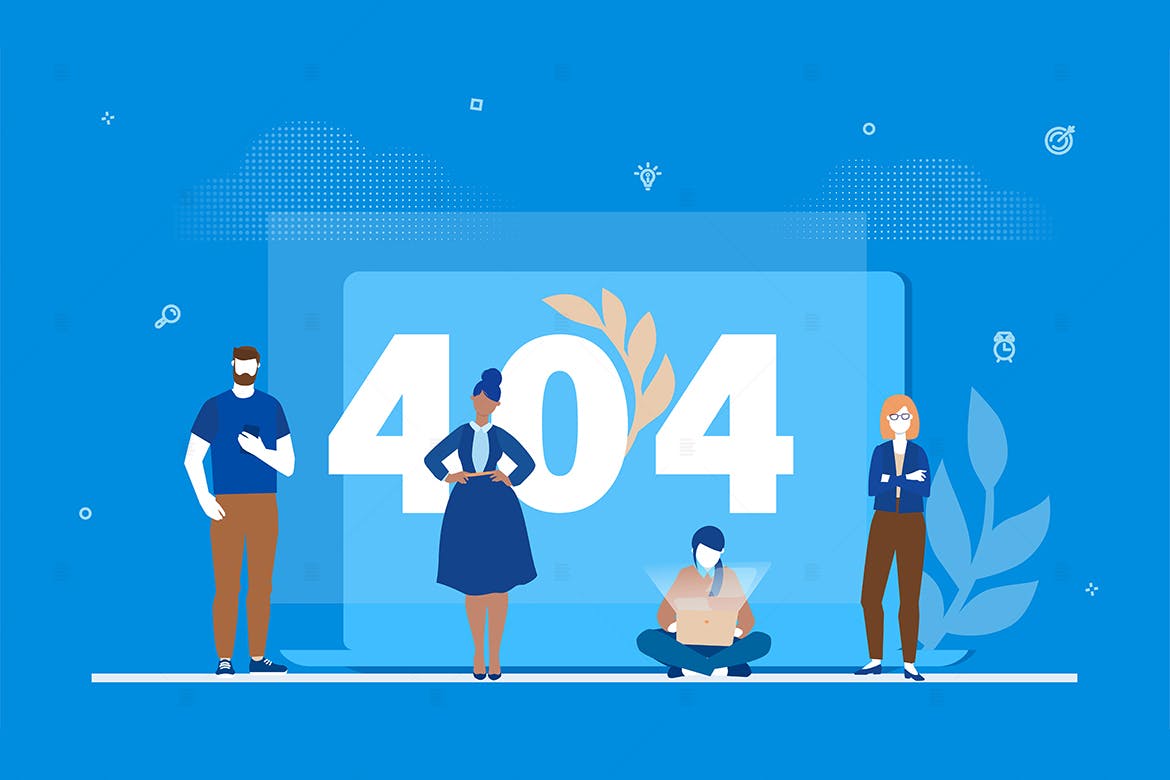
- Inform users that the website they are searching for is no longer available in a welcoming manner.
- Provide them with alternatives (suggest other related pages).
- Make it easy to return to the previous tab, your homepage, or other key sites.
Simply open a new browser window and enter a URL on your website that does not work to see how your 404 page looks. Your 404 page will be shown in the tab. Don’t waste time refining the 404 pages; instead, be sure that when a page isn’t located, a custom 404 page is shown. If you want to strengthen your Technical SEO Strategies, do not forget the step of 404-page optimization.
Support Technical SEO with Ongoing Optimizations
When you’ve corrected the most important bugs, you’re still not done with technical SEO. Measuring and monitoring the effect of these fixes over time will help you figure out which technological SEO considerations have the greatest impact on your rankings (or vice versa). Based on that, prioritize potential events, and you’ll see an increase in organic traffic.
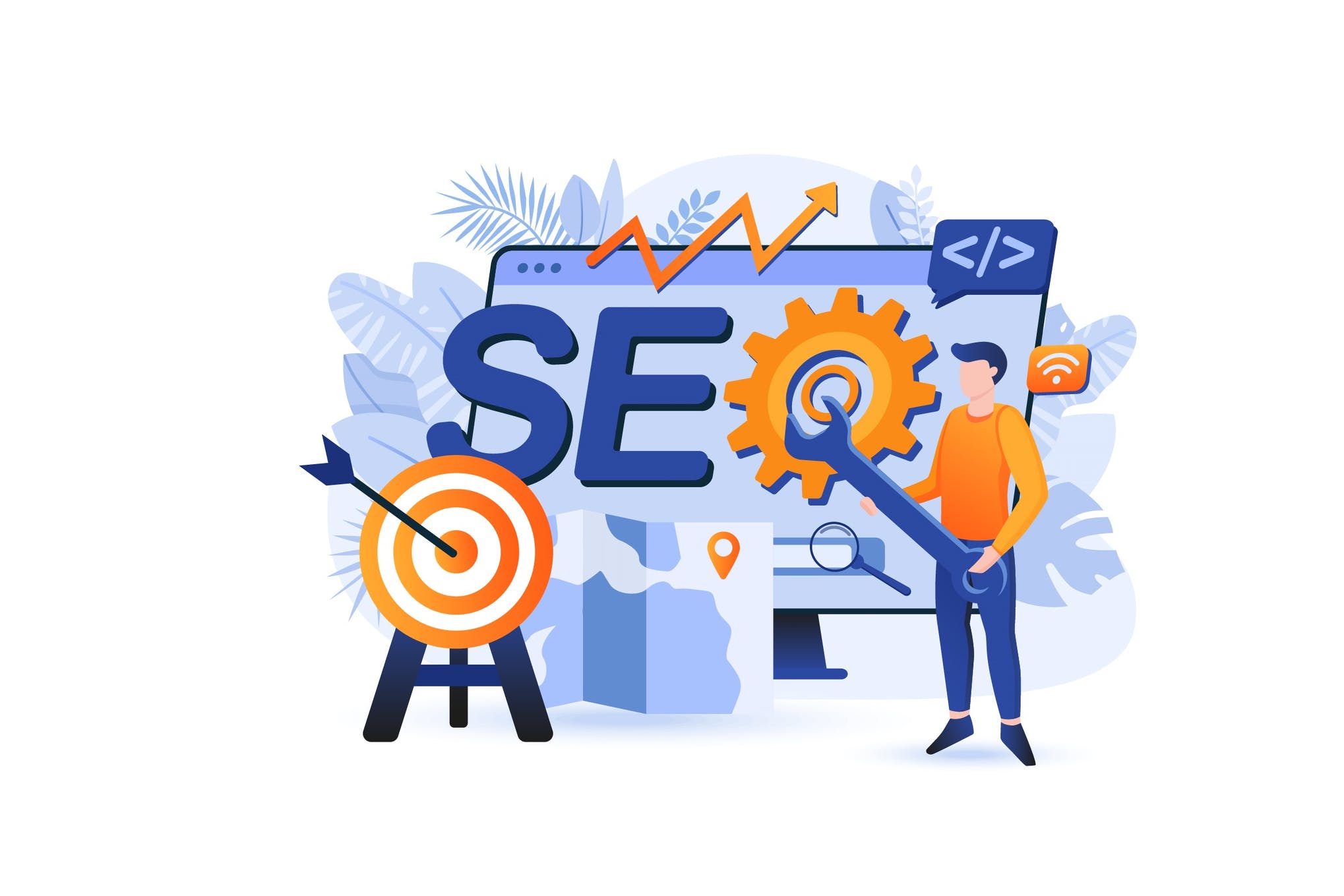
Contact a reputed SEO company and opt for their Advanced Plan to implement effective Technical SEO Strategies for your business and get an updated Site Audit report regularly. You can further keep a proper track of your improvement in fixing site issues and watch for new ones to ensure a website that acts for users and for crawlers with help of suitable SEO services.
Expert’s Insights on Technical Search Engine Optimization
Fixing 404s
Fixing 404s on incoming and outgoing links has one of the biggest impacts in the technical SEO checklist. When external sites link to your site, and those result in a 404, redirecting those to a comparable page helps build the link profile of the site. Google also seems to see sites that have no broken external links as having a higher quality. These sites seem to rank better than sites with broken links.
Core Web Vitals
With the May 2021 Core Web Vitals Update on the horizon, many site owners are focusing on page speed. Google says that sites that score ‘green’ in First Input Delay, Cumulative Layout Shift, and Largest Contentful Paint may get a slight boost in rankings. One thing we have noticed is that sites that currently rank on Page One for many of our client’s keywords tend to have a CLS (Cumulative Layout Shift) in the ‘green’. Focusing on this and other page speed metrics will make visitors happy, and seem to have a positive correlation to high rankings.
XML sitemaps
Having XML sitemaps submitted to Google seems to get new pages in the index faster, though the pages do not seem to get a boost because of XML sitemaps. However, getting a key page in the index of pages that can appear in search results makes it possible to rank a good page faster.
Privacy Policy Page
One thing that not many people are talking about is Google seems to expect to see a Privacy Policy page on most websites now, especially e-commerce websites. We have noticed that when we add a Privacy Policy page to existing e-commerce and other websites that collect contact information, the ranking seems to go up in most cases. This may be a sign of site quality.
URLs Optimization
URLs that are logical and concise, and not unnecessarily wordy also seem to rank better after launching. On sites where we have redone the site architecture to make the URLs ‘non-keyword stuffed’, and only mention the keywords in a logical manner, the rankings seem to better after a few weeks to a couple of months. Users may be clicking on these results because they are easy to understand at a glance. This may correlate to higher rankings.
Using AMP
In our client roster, we have seen no positive SEO effects for using AMP for mobile pages unless the site is a news site or publishing site. Small businesses of all varieties, industrial and manufacturing sites, and home service contractors appear to have no extra ranking benefit from using AMP vs optimizing the default code base to be mobile-friendly.
Site speed
One of the most important technical SEO factors you should consider in 2022 is site speed. Most consumers expect web pages to load in less than two seconds, and if it doesn’t, you can expect them to go to the competition. And it’s not just for customer experience—beginning in June, Google will factor page speed and other metrics that indicate a great user experience when ranking Search results. This makes a speedy site not just a nice-to-have, but a must-have to up your search ranking. You can test your speed with tools like Google Pagespeed Insight, and some simple ways to increase your site speed are to optimize all of your images, enable GZIP compression, clean up your tag manager, and utilize browser caching.
Creating useful content
Creating useful, original, intent-driven content is more important than ever. This may not seem like a technical SEO issue, but the way that Google’s BERT algorithm now understands search intent and delivers results from more conversational searches makes it critical that you really understand what your high-intent keywords are. Look for keywords that drive conversions, not just vanity traffic and clicks, to get to those juicy, high-intent keywords. Additionally, take advantage of any first-party data sources that you have access to, like data from customer conversations in the contact center, website conversion data, and email conversion data to get to the heart of your customer’s intent and how they really talk about your product.
Work with a great SEO agency
Lastly, I recommend that you work with a great SEO agency if you don’t have someone who can be dedicated to it in-house. It’s very easy for technical SEO to get kicked down the road, especially in smaller marketing organizations where the person who’s responsible for SEO is also driving and executing content strategy. (Ask me how I know!) When you use the right agency that is aligned with your business and goals, they help keep you on the ball, and more importantly, can handle some or all of the technical work on the backend for you. This allows you to focus on strategy and content instead of spending all day hunting and fixing technical SEO and website issues.
Technical SEO plays an important role when it comes to growing your website traffic. Even the tiniest of errors in it can have catastrophic consequences on your SERP rankings. That said, here are the most critical technical SEO factors you need to consider in 2022:
Page Experience
Google is slated to roll out its page experience update in 2022. It’ll check your website for the three Core Web Vitals — Cumulative Layout Shift (CLS), Largest Contentful Paint (LCP), and First Input Delay (FID).
To optimize for these factors, you need to make numerous technical changes to your website. These include the likes of optimizing your JavaScripts and images, reducing the number of HTTP requests, etc.
In my experience, most websites are still not prepared for this update, which is just a few months away.
Broken Links
Broken links are not just bad for SEO, but also spell disaster for your user experience. Nobody wants to land on a 404 page after clicking on a link that they hoped would take them to the thing they were looking for.
You need to run technical SEO audits to ensure that you can find and eliminate all broken links on your website.
301 Redirects
With the importance of SSL certificates rising by the day, it’s become more important than ever to ensure that you’ve implemented the 301 redirects on your website. Else, two versions (HTTP and HTTPS) of your website will exist and this will impact your SEO negatively. Many websites still haven’t implemented these redirects, so make sure that you do.
In the world of Google search, there aren’t that many ‘low competitive’ search terms any more. The reality is, if you want to rank for search terms with decent traffic, you will need to compete for the spots. That said, here are my 3 top technical SEO tips I’ve learned over time:
Good internal header structure is essential
To help Google’s bots better learn what your pages are about and better crawl your site. It’s all too common for websites to be built from the designer’s view, where headers are used for the purpose of the design, and sites end up with multiple H1 headers or no H1 header at all, but everything else is necessary H2s – which will just confuse Google when it crawls your website. Structure each page, with just 1 H1 header, H2 for the sub-points and H3s under it, and if it’s not meant to be a header, but put it in plain text, and style it like a header, that way, Google can clearly know what your site is about.
Click Worthy meta titles win
Optimize your meta titles and descriptions to make it more ‘clickbaity’ to help increase the CTR (click-through rate) of your website. If users are clicking on your page over the other ones, they will value your page higher and position you further up the rankings. These days, you don’t necessarily need the highest DR (domain rating) to be first, sometimes, you can beat your competitors by having a more attractive title.
Site speed and user experience matters
If you want to compete with the big boys, you better make sure your website and experience are up to scratch. If it’s still slowly loading and the user flow isn’t seamless, you’re going to have a high bounce rate, which would hurt your rankings. Google has a site speed tool that tests the speed and will give you tips and recommendations on where to improve the site.
One-page optimization for eCommerce is vital when it comes to generating long-term organic traffic for your online store. Although it’s the simplest of SEO tactics, it is also the most important. Stores that put effort into regularly optimizing each and every page ensure they are set up for maximum traffic potential.
One-page optimization is not as overwhelming as it sounds, as many of your shopping experience tweaks also allow you to technically optimize for search engines. This includes making sure every store, category, and product page include:
- Metadata, written for humans but optimized for bots.
- Alt-text for all images and sized for maximum load speeds.
- Internal and external links (Such as FAQs, T&Cs, related products, reviews, etc.)
- H1, H3, and H3 tags using main keywords or phrases without keyword stuffing.
- Short, user-friendly URLs.
- Optimizing for mobile and desktops.
- Primary keyword used in URL, titles description, metadata, and alt image tags.
- Secondary keywords used in product descriptions broken up for easy reading.
- Highlighting key product features in a user-friendly way to keep users engaged for longer, helping bounce rates.
As websites grow, so do the number of pages, and it’s easy for on-page optimization to fall through the cracks. To ensure you are continuously optimized, we recommend regularly auditing your site to spot any underlying issues such as optimum page speeds for both your customers and Google.
Improving technical SEO is a fundamental aspect of a complete SEO strategy. So, irrespective of the industry you cater to, when you want to get the best outcome from your site, including more organic traffic, conversions, and ranking keywords, you need to focus on technical SEO.
But what are the best practices of technical SEO that you can follow in 2022? Here are the top factors that will reign in 2022 –
Gear up for Core Web
For years, Google, the search engine giant, has stressed on Page Experience Signal for measuring the overall experience when interacting with a web page. The Page Experience signal assessed the elements that make a web page user-friendly.
And as Google is about to introduce Core Web Vitals – a pivotal ranking factor in 2022, page experience metrics are something that should always be the chief priority. According to Google, Core Web Vitals are “a set of real-world, user-centered metrics that quantify key aspects of the user experience.”
Areej AbuAli, SEO Manager of Zoopla said, “Make the most out of insights provided via tools such as Lighthouse and Crux API. Everything from page speed, mobile-friendliness, rendering, image optimization, and security protocols need to be optimized for.”
Made up of the page speed and user interaction measurements, including Largest Contentful Paint, Cumulative Layout Shift, and First Input Delay, these metrics will measure loading speed, visual stability, and interactivity, and contribute to improving a page’s overall user experience.
Integrate Automation to Boost Performance
As tasks are automated with time, we can take a break from tedious and monotonous work and focus on significant projects.
Similarly, SEO automation brings us the opportunity to take some of the weight off our shoulders. According to Hamlet Batista, CEO, RankSense, the possibilities for automation in SEO in 2022 will be astounding.
SEO automation refers to the process of systematizing SEO tasks with the latest tools or software to minimize manual efforts and speed up the task.
Although we are not in the stage to automate every SEO process, we can automate major things like site monitoring, rank tracking, backlink analysis, competitor monitoring with tools such as SEMrush, Screaming Frog, Ahrefs, etc.
Minifying CSS & JavaScript Files
In 2022, you need to focus on your site’s speed. Although it was a major ranking factor in previous years too, the importance is increasing rapidly.
When it comes to improving your site’s speed, minification is a crucial factor that you can never ignore. Minification means removing unnecessary or redundant data such as comments, whitespace characters, new line breaks, and block delimiters without affecting how the code works.
By reducing the load time and bandwidth usage on the website, this method dramatically improves website speed, along with accessibility. In some cases, minification can reduce 60% of the file size. So, there will be a boost in site speed.
Create Crawl Budget Carefully
Without being indexed, the pages of a website can’t rank. This is why it is important to index all your web pages. But can you index as many pages as you want? No.
Google bot can crawl and index a number of pages of a site within a given framework, and it is termed as crawl budget. When you exceed the crawl budget of our site, search engines can’t crawl your site effectively, and as a result, your SEO performance is affected drastically.
In layman’s terms, a crawl budget means the attention that search engines give to a website. Although there is no definitive guide that search engines follow to assign crawl budget, two major factors include crawl limit and crawl demand. And the things that can improve the budget are better site speed, internal links, flat website architecture, original content, etc.
Understand the Importance of Passage Indexing
According to Google, “We’ve recently made a breakthrough in ranking and are now able to not just index web pages, but individual passages from the pages. By better understanding the relevancy of specific passages, not just the overall page, we can find that needle-in-a-haystack information you’re looking for.”
It is said that when fully rolled out globally, the passage-based indexing will affect 7% of search queries.
With this, search engines can understand that specific passages are a lot more relevant to a specific search query than a broader page on that topic.
When rolled out properly, headers are more important while title tags also have an important role.
To optimize a website for passage indexing, you need to focus on certain things like making the comprehensive passage, including LSI keyword to H2 tag, using data highlighter, image, and valid schema mark-up.
So, keep these in mind and work on these, and for the best outcome, opt for a reputable digital marketing agency today!
HubPages
One of the most overlooked technical SEO issues from my experience has to do with HubPages. Also known as Topic Clusters or Content Hubs, HubPages piece the content on your website together in a very search-engine-friendly way.
Using HubPages allows Google to create a contextual map of your website and understand and classify your content better. They are also great from a UX perspective. Users get a hub of relevant information they can explore to their liking – similar to an encyclopedia.
Many CMS platforms have some functionality that supports HubPages (e.g., WordPress’ Blog Category Archive pages). However, spending a bit of time and energy creating or customizing your HubPages can take you a long way.
But why would we classify this as a technical issue when it’s so intertwined with content? Firstly, because it directly affects your website’s hierarchy and how your sub-pages are organized. Secondly, it all starts with your HubPages/Topic Clusters’ technical setup – from front-end design to URL setup.
Using such Topic Clusters effectively gives Google yet another reason to, in fact, index your content. That’s because now it understands better what search queries it should serve. Similarly, even websites that already get their content ranked can benefit from Topic Clusters and see an improvement in their rankings. Ultimately, adding Content Clusters serves the end-user by providing them with organized content – which in the long run, Google is going to reward.
E-commerce Indexation
The biggest technical SEO problem I often see in E-commerce stores has to do with indexing more pages than needed. There’s no one specific area where this is more prominent – it appears in both tags, filters, and sometimes even dynamically pages generated through customer searches.
Many web shops are run by non-technical hobbyists who are beginners in SEO – and thus, errors of this type are understandable. Working at an SEO tool targeting beginners, you often get to see such patterns up close.
On the upside, these errors are most often not critical, and they don’t harm the website significantly. On the downside, left unfixed, they may present future problems. These could then require the attention of a specialist, costing the company much-needed profits.
One clear example is offering electronics. There are many terms and qualities each of the products possesses. As such, webshop owners often try to classify each product feature into its own category or tag.
With one simple mistake from the developer, this can quickly spiral out of control as hundreds of lower-quality pages get created. Consequently, this can present many problems later – from crawl budget issues to duplicate content errors and cannibalization.
However, as a general note, it’s important to note that most modern CMS platforms come with great SEO functionality out of the box already. Otherwise, you can extend their functionality with the help of a plugin. It has never been easier for anyone to create a decently optimized website this quickly with such little effort.

8. Adriana Stein
CEO and Founder of IDI Consultancy
From working with clients who have clear business objectives and prioritize scalability and sustainability, I’ve learned to use SEO as a tool to promote brand awareness and customer loyalty. That’s why for me, the most important technical SEO factors are those that give your client’s customers the best experience and the most relevant and helpful content. Optimizing for these 3 factors guide me in achieving my clients’ business goals:
Optimizing for mobile
Ensures that I’m helping my client connect with and convert as many of their ideal customers as possible. Potential customers interact with businesses using different devices and a mobile-optimized site ensures that you are giving them the best experience at every touchpoint.
Resolving duplicate content issues with a canonical strategy
Working with multinational companies with many local subsidiaries means having to deal with a lot of duplicate content. For example, they often have multiple pages describing the same services but tailored to different markets and audience segments. While it’s great to have highly customized and personalized content that speaks directly to your target audience, this could get you in trouble with the algorithm if you don’t implement a canonical strategy. When dealing with similar websites, make sure to include proper canonicalization to your overall SEO strategy.
Following metadata & content optimization best practices
Even the best SEO audit and content strategy go to waste if you don’t use your keywords smartly. While you definitely should aim to write content that’s relevant, useful, and engaging to the humans who are reading it, you should also make it easy for search engines to understand what your page is all about. And the best way to do that is by properly optimizing metadata. Remember though: don’t overdo it! Over-optimization gets you in trouble with Google as well, so finding the right balance is crucial.

9. Joydeep Bhattacharya
SEO Expert and Author at SEO Sandwitch Blog
Apart from an optimized URL structure and high-quality content, the below four factors are the most significant for technical SEO:
Page Speed and Core Web Vitals
Page speed is a vital ranking factor and is the main component of the Page Experience update set to launch in June 2022. SEO experts and webmasters should pay careful attention to site speed. A faster loading site offers a great user experience leading to a higher time spent on the site and more conversions. Besides, optimizing for Core Web Vitals is also a key to higher rankings. The Page Experience report in the Google Search Console is a great way to check the number of URLs in your domain that offer a good page experience. You need to increase the number of good URLs in your site by optimizing your site for page speed, fixing LCP, FCP, FID, and other UX-based issues in your site.
Mobile Optimization and Voice Search
Your site should be mobile-optimized since a majority of searches are mobile-based. Have a responsive website, optimize for voice search queries (especially conversational keywords) and make sure all your site URLs can be accessed via sitemaps.
SSL Certificate
SSL certificate is not just for e-commerce sites, it’s a must for every domain. If your site still runs without an SSL, Google won’t consider your domain trustworthy.
Structured Data
Structured data helps Google to learn more about your webpage and present the information in the form of rich snippets leading to more clicks. You can use a tool like Yoast SEO to add structured data to your site.
While there may be SEO factors that will matter for a long time, there are a select few that do need to enter the limelight each time a year rolls in. For one, the data behind these factors is well worth looking at because it’s clear evidence of the impact of each one. We’ve compiled them here for your reference.
On-page content still has plenty of clouts
Close to 60% of marketing executives can attest that optimizing their on-page content greatly boosted their SEO performance. In short, content is still king in 2022. And the longer, the better. After all, the average length of the content that currently occupies the top ranking positions for most keywords doesn’t fall below 2,000 words. This rings true even for voice search results.
Of course, building trust is just as important as prioritizing length. But, in the end, the two complement each other as the latter only provides you better opportunities to earn your audience’s trust.
Voice search’s trajectory is continually on the rise
Speaking of voice search, did you know that 55% of households worldwide are forecasted to have their own smart speaker by as early as 2022? This is why now is the best time to start optimizing for voice search. Typically, voice search is closer to human conversation, so it’s best to start going for keyword phrases that are characterized by that style.
Even a few high-quality backlinks could make a world of difference in your rankings
After all, it’s been discovered by a recent Ahrefs study that 91% of pages receive zero organic traffic because there isn’t a single backlink pointing to them. As much as 55% of pages worldwide have been reported to not have a single backlink.
Lastly, it’s also been confirmed, based on a study of over 900 million website pages, that the more backlinks your website has the higher its search traffic would be. The average number of backlinks of websites that rank high is usually close to 4 times higher than websites below them.
Aim for long-tail keywords as much as possible
Why? Because 70% of search queries tend to not fall below four words. It has also been discovered that long-tail keyword searches have 5% higher CTRs than their generic counterparts.
Visual search is becoming a haven of SEO opportunities
It’s been discovered that up to 62% of people that belong in the young generation, Millennials and Gen Z, tend to prefer searching for images, even when searching with buying intent. Now is the best time to include strategic keywords in images with this fact in mind.
What’s sure about the facts shared here is that there are SEO factors that would likely stand the test of time, while there are others that are slated to take the place of the obsolete. On the whole, one fact still stands out in all the data we presented here: SEO should always be your priority. Without a doubt, many savvy and experienced digital marketers would say the same.
Internal Linking
Internal links are a great way to drive relevant keywords from your own website to pages that you would like to rank. Some would argue that internal links are equally important as backlinks.
The reason behind that is that you are able to utilize internal links to help Google spiders crawl the structure of your website. That intern helps Google understand the pillars and clusters established for your website relating pages to each other.
It also allows web admins to guide users to their desired page to lead to conversions. This is valuable when attempting to use SEO to convert users to customers or sales.
Internal linking is a good way to establish the main topics and related subjects on your website. Some webmasters would argue that this could be done in part by using keyword-rich anchor text, but it’s not just those with SEO expertise who can do it. Internal links are great for simplifying navigation around your site as well.
Mobile Optimizations
Google in the past has taken its time to switch over fully to mobile indexing first but has committed to making the full change this year in June. It was first announced to happen in July of 2019 but the transition hasn’t fully switched over.
It’s going to be more important than ever to ensure that not only the user experience of the users on mobile is optimized but it’s important to determine how to ensure that all information is presented in the mobile form. For example, 30.31% of URLs served a different number of internal links for desktop devices than they did for mobile devices. e. That intern helps Google understand the pillars and clusters established for mobile devices.
It’s also important to understand that Google has been rolling out deep link crawling, which is an extension of their RankBrain algorithm. The way this process works will be the site where you go from one page on your website to another and what content you’re reading might affect how others see it in search engine results pages (SERPs) when they’re looking for your business.
My Opinion: The future of SEO is about mobile optimization and deep link crawling as it’s important to ensure that all information is presented in the mobile form, which helps Google understand the pillars and clusters established for mobile devices. It’s also important to keep up with how RankBrain works because what you are reading.

12. Satish Shahare
Digital Marketing Experts at Creative Design Blog
It is incredibly important to analyze technical SEO factors in your website’s SEO audit. This helps you in establishing a strong foundation that can lead you to success. In this quick read, we have covered the most essential ones for your ready reference.
Ensuring Mobile-Friendliness
A mobile-friendly website improves search engine rankings. This is one of the elements that can be easily checked through Google’s Mobile-Friendly Test. All valuable insights can be conveniently obtained. Some important factors that can lead to the desired results include:
- Increasing Font Size
- Embedding YouTube Videos
- Using Accelerated Mobile Pages (AMP)
- Compressed Images
Image Optimization
One of the most critical optimization factors is page loading time. If your website includes images with heavy file size, then loading speed will be affected. Hence, the goal should be to identify such files and ensure their optimization.
It is estimated that approximately 65% of your site’s weight is through images. Hence, optimizing them will help in improving the speed. It will indirectly ensure that your audience interacts conveniently with products and services.
Minifying JavaScript Files & CSS
The site’s loading time can be decreased by identifying bloated JavaScript and CSS code. Usually, it is found that the WordPress themes are guilty of bloated JavaScript and CSS. If sufficient time and action are taken to minify them then the load times become 2-3 seconds or even less.
In an ideal scenario, a website implementation should feature only one CSS file and JavaScript file. Potential bottlenecks, calls to the server, and other issues can be minimized if the coding is flawless.
Robots.txt
Out of various important technical SEO factors, Robots.txt is the one that is easily ignored by many. On the contrary, early identification of the existence of Robots.txt is a good way to check the website’s health. Making and breaking of the site performance in search results highly depends upon the robots.txt file.
For example, consider that you set the file to “disallow:/”. Here if it is disallowed, then you are technically instructing search engines to never index the site. This is because “/” is the root. There are various site owners that get this wrong and end up with poor performance. Hence, this should be amongst the priority checks for SEO of your site.
Remember, it should always be set to “disallow” without any forward slash as it will enable user agents to crawl the site.
Crawl Errors
The final factor that you must check for without fail is the crawl errors. The crawl error section of Google Search Console (GSC) helps in detecting whether any such errors exist on-site or not. For any website audit, finding and fixing crawl errors is an important part. This is because the more errors you have the more issues search engines will face in finding and indexing the pages.
For ensuring the best health of a website, ongoing technical SEO maintenance of this factor is extremely important.
In GSC, call out and fix all errors on 400 and 500 servers and other not found errors on the site. This will help in issue resolution.

13. Ms. Sai Deshmukh
Digital Marketing Experts at Merkle Sokrati
A simple understanding of the more complex aspects of SEO will spell the difference between a site that ranks well and the one that does not. Here are my top 3 tech-SEO factors that I believe build the foundation of any website.
Site Speed
Web page load speeds are important to a better user experience as users spend more time on their mobile devices. About half of smartphone users desert sites that take less than 3 seconds to launch, but SEO’s know that most web pages take even longer, resulting in a substantial disparity between user expectation and most companies’ mobile strategy. The shift to mobile is ever-increasing and ubiquitous. Looking at core web vitals is one technique to improve your load speed.
Structured data for some shiny results
You can get a 20% higher CTR with the addition of schema markup on your website to serve eye-catching results. There are many ways to qualify for rich results like ratings and reviews, breadcrumbs, images, stars, etc. in addition to helping Google assess your site for E-A-T. An important part of the search landscape is Voice Search! Structured data helps voice assistants understand your content better, thus boosting Voice search SEO. Would suggest using JSON-LD format for your website.
Sitemaps
A website must have an element
Crawling and indexing are hugely influenced by the presence of a well-optimized sitemap.
You can break your normal sitemaps into subunits like image sitemaps or video sitemaps and even news sitemaps.
Optimize for FAQs
The percentage of search queries that are phrased as questions is about 8%. FAQs are very crucial as they improve your overall session duration, better the user journey, and provide relevant content to make educated decisions. Adding CTA’s to your FAQs will result in increased engagement. You can also use FAQs schema for FAQ rich results.
Work Upon Your Metadata
Metadata helps XML-based software to categorize pieces of data for site owners. This, in turn, lets site owners allow search engines to crawl a page and check its relevance with what the user has searched.
The metadata also decides your page ranking on the SERPs and its number of clicks.
When a user searches a query using search engines, then the information provided to him is with the help of these HTML Meta Tags.
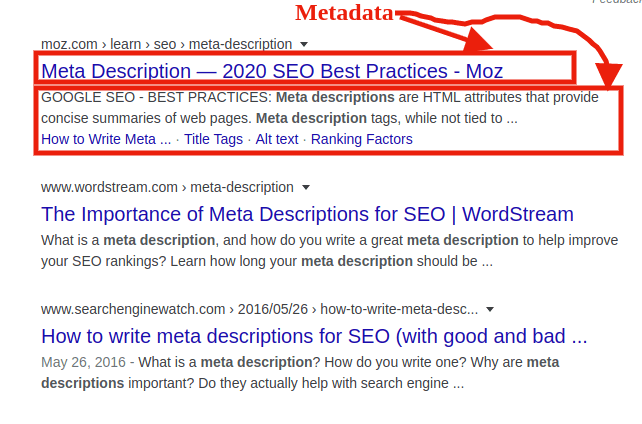
Optimize your meta tags which include meta title tag, meta description tag, and meta robots tag. These should be descriptive enough to tell the audience what’s in store for them and concise enough to avoid getting trimmed in the SERPs.
Hunting the Right Keywords
This always comes unsaid whenever we are discussing search engine optimization but researching for the right keywords is an absolutely essential part of technical SEO. Be it any year, keywords will always be a top priority. They are omnipresent and impact the search engine rankings directly.
You can use Google’s “Auto Suggest” feature, the “People Also Ask” section in Google search, any handy keyword research tool like SEMrush, Ahrefs, UberSuggest, etc. I personally have been using SEMrush for many years and can highly recommend it from experience.
Add Schema Markup
Schema is the collection of structured data and informs the search engines of the meaning and information of web pages.
Implementing any and all kinds of schema markup relevant to your content is super important for the technical aspect of your SEO efforts.
Common types of SEO schema markup include:-
- Organization Schema Markup
- Schema Product & Offer Markup
- Schema Local Business Markup
- Breadcrumbs Markup
- Video Schema Markup
- Event Schema Markup
Each of these markups focuses on specific areas where proper arrangement and representation of brand content is necessary. So dig in and get all of these optimized for your content.
Satisfy small screens and optimize for mobile
According to Statista, mobile accounts for approximately half of the web traffic worldwide. In the first quarter of 2022, mobile devices (excluding tablets) generated 54.8 percent of global website traffic, consistently hovering around the 50 percent mark since the beginning of 2017.
The above fact lays enough emphasis on the fact that your web content should be optimized for mobile. And if you still have any doubts, Google’s Mobile-First Indexing update for the whole web will certainly compel you to act instantly.
Using a responsive web design that allows you to serve website content on different screen sizes appropriately is the best practice.
Core Web Vitals
This really comes unsaid but the latest addition of the “Core Web Vitals” to Google’s existing signals for search completes the page experience update and is set to dictate terms throughout 2022 and years to come.
The 3 signals added are as follows:-
- Largest Contentful Paint(LCP) for Loading
- First Input Delay(FID) for Interactivity
- Cumulative Layout Shift(CLS) for Visual Stability
These can be measured through your Google Search Console report and you can use tools like Google PageSpeed Insights and Lighthouse to improve them.
Update and upgrade keywords as per search trends
A very good SEO strategy in 2022 will focus on the fact that search trends are very different from what they were before covid 19. With the ever-increasing needs of edutainment, home deliveries, digital payments, and online education taking the front seat, we need to change the way we optimize, personalize and humanize the SEO space. It’s nothing new when I say that keywords have been playing a vital role and always will. I would like to state an example. Say in the case of an essential goods retailer, a smart SEO strategy will surely leverage on ‘near me’ searches that have seen a massive uprise trend in the current year. With the major population now looking for the smallest of things to be delivered to them, this keyword can change the way you sell your goods or services. Similarly, other trending keywords that work in different industries have to be relooked at with the changing trend of 2022.
Clean and smooth mobile experience
Another important thing that has always dominated SEO is ‘page experience’ and it is surely going to be the supreme ranking factor. Never mistake page experience with page content. A very neat and smooth mobile experience is of the highest priority to Google, today. Whereas a poor mobile experience can definitely push you out of the ranking, even more strongly than ever before. With the Mobile-First Index, the essentials that really matter most are relevance, prominent use of keywords in page titles, headers, backlinks, and more. Take a mobile-friendliness test by Google and ensure that your website has all things required.
Search engines have already prioritized mobile-friendliness and it is better if we do the necessary things for mobile parity.
Check your analytics to find out how many users visit you via mobile phones. If the number is good, you must also focus on smaller aspects of mobile first indexing. Check out your UX and mobile snippets too.
Technical SEO is essential for the smooth functioning of a website. Any website should have a strong technical foundation for optimization. Every website must go through the process of technical SEO for getting more leads and conversions. You can take the help of an SEO company to improve the SEO efficiency of your website.
Let us look into a few of the technical SEO factors for effective website building.
Sitemaps
A sitemap file is essential for your website that helps to:
- Understand the website structure
- Page location
- Website accessibility
XML Sitemaps are the sitemap that lists all the pages to help google find & crawl all the pages. The sitemap is installed in the root directory and you can check it from the web browser by adding the sitemap.html or sitemap.xml after your domain name. For example- If you want to check the sitemap of VOCSO.COM then you can click on this link www.vocso.com/sitemap.xml.
Robots File
Yet another technical SEO factor to consider is checking the robots.txt. Identifying its existence on a website is a sign of good website health. If you set robots.txt to “disallow:/”, it indicates to Google not to index your website as “/” indicates root. Checking for robots.txt is essential in SEO and indicates a good website. As a best practice, set the robots.txt to “disallow: “ without having the slash. This setting allows all user agents to crawl your website.
Crawling and Indexing a website
Also an essential technical SEO factor to consider is the website indexing and crawling. To get a top rank for your website, your website needs to bypass the search engine.
- A). Crawling – In Crawling, a Search engine bot will look at the whole content & code of the website & analyze it.
- B). Indexing – During the crawling process, ensure that you store and organize the content and index the page. After the page is indexed, it gets displayed according to the relevant queries.
Proper Website Structure
Having a better website structure is another technical SEO factor. When the website structure is good, it gets a higher rank in the search engine. There are some structures that each website takes based on its domain. By developing website structure carefully, you can get search excellence. A good website structure takes care of the following:
- A). Great user experience
- B). Provides your website with site links
- C). Better crawling
- D). SEO success
Site is Secure
Security is another important aspect of technical SEO. Make Sure you have a secured version of your site in order to prevent it from hacking. HTTPS site secures the data that is sent between the browsers & a site. Every user should feel safe while browsing your site. You need a SSL certificate to implement HTTPS over your site. You can check this on various browsers as a lock appears on the left side of the browser.
Checking load time
Website load time is an important technical SEO factor. If you are concerned about search engine rank, page load time has a huge impact. Users prefer to browse through every website quickly and a slight delay on page load tends for a higher bounce rate. Every website page should load to the user’s web browser quickly. Also, any other website elements like images, videos, etc. should also load quickly. Test each website page using the web page test tool so that you can measure the load time of every web page. For a better user experience, website developers need to have a close watch on the load time.
Structured Data
Structured data plays an important role in SEO as it explains search engines about your website what kind of services, products, recipes, etc your business deals in. And you can add additional details about the products too. Due to fixed format, search engines easily predict the data & understand it.
Monitoring broken links
Monitoring broken links is an essential element for any website. It is also an important technical SEO factor. Whenever a visitor sees a link and clicks on it, they expect certain content to be available on their browser. If the link is not functioning, it creates a bad user experience. It also harms the ranking of a website as well. For any website development, check on any broken links and if found fix them immediately. Broken links are of two types.
- A). Internal links – Internal links refer to the links that travel between the pages within the same website. Control of these links is within the website developer’s limit.
- B). External links – External links refer to the links that are outside the current website. These links need to be checked often as at any time the content might vanish.
Minimize CSS & Javascript Files
Minimize CSS & Javascript files will help in increasing site speed which ultimately helps in boosting the technical SEO of the website. A lot of WordPress themes are crowded with such types of files & if taken care of on time, could increase the speed of the site. Usually, most websites prefer to create one CSS & one Javascript file.
Image optimization
Images are an essential element on a website. Sometimes, heavy images take time to load and lead to a bounce rate. Make use of the right image format like PNG, JPEG, and GIF. Compress the file size thereby maintaining higher quality.
Technical SEO is essential for website success. Ensure that your website meets the technical requirement to get more conversions.
Fixing 404s on incoming and outgoing links

17. John Lincoln
John Lincoln (MBA) is CEO of Ignite Visibility (2017, 2018, 2019 and 2020 Inc. 5000 company) a highly sought-after digital marketing strategist, keynote speaker and winner of the coveted Search Engine Land “Search Marketer of the Year” award.
Keyword Research
Keyword research is an important SEO process that every digital marketer should consider. It provides valuable insight into the words and phrases that the target audience is actively searching on search engines like Google, Bing and Yandex. In order to rank higher on Google or other search engines and drive organic traffic to your website, you need to be aware of the search queries that users make, both the transactional and purely informational ones. To be able to rank higher on Google’s SERP (Search engine results pages) for a particular keyword, it is recommended to take into account the search intent behind each target keyword. By helping you to identify the search intent of your audience, you can determine what they want to read about and align your content with those topics.
Content Marketing
Content marketing and SEO are natural complements of each other. They act as the vital components of any successful digital marketing campaign. Content marketing includes creating and sharing valuable and relevant content with your audience. Aside from the text, content encompasses visual and audio elements like infographics, podcasts, videos. Fresh, unique, and useful content gets rapidly indexed on Google and ranks higher than low-value, repetitive and purely promotional content. Sharing valuable information with your target audience is a perfect way to attract people and show that you’re a great expert in what you do.
Featured Snippet Optimization
Featured Snippet Optimization is very appealing and desired to be in the #1 position in SERP results, but let’s face it: Position 0 is way better. And optimizing your content for featured snippets is the direct path to appear there. Even though they might not give great results to e-commerce, travel and media websites (as only 3% of Google search results on aforementioned topics appear in position 0), they have a massive impact on rankings of scientific and healthcare-related ones (14.4% healthcare-related keywords appear in featured snippets, according to Searchmetrics). Nevertheless, it is highly recommended to optimize any informational content pieces for featured snippets, which can appear in the form of a text, listing, table and even a video on Google SERP. Use your target keywords in the headings and subheadings of your content, insert useful lists and tables, and soon you’ll surely see yourself on top!

Ruben Rogers
Ruben’s background is in digital marketing, more specifically eCommerce and lead generation. He has a passion for all things tech-related, including SaaS startups, digital marketing, and the Internet of Things.
Decrease page weight and size
Pagespeed is an important element of technical SEO. Any webmaster and SEO professional should aim to create pages that are light and quick to load. This is essential to improving a website’s overall user experience. To decrease webpage size webmasters should remove any unnecessary scripts, minify CSS and Javascript files, optimize images, and make use of a CDN to quickly serve pages to users irrespective of their location.
Add hreflang to your site for international versions of your website
The hreflang tag should be implemented when you’ve got language-specific variations of your website. This tag tells Google what language a site is and helps in ranking a website for search queries in the respective language.
For instance, if you’ve got a Spanish version of your English website, the hreflang tag can be implemented in order to rank the Spanish version for Spanish search queries from users in Spanish-speaking countries.
Create SEO-friendly URL structures
URL structure refers to the format you use when creating URLs. To create SEO-friendly URLs you should ensure that you follow these best practices:
- Always use lowercase letters. E.g. www.domain.com/technical-seo instead of www.domain.com/Technical-SEO.
- Try to keep them as short and descriptive as possible. E.g. ww.domain.com/techncial-seo instead of www.domain.com/technical-seo-for-a-new-ecommerce-website.
- Always use your target keywords in the URL.
- Use hyphens to separate words in the URL. E.g. www.domain.com/technical-seo-ecommerce instead of www.domain.com/technical_seo_ecommerce.
Infographic: Experts Tips on Technical SEO

Reach Google’s Top Pages, Generate Qualified Traffic, and Drive Sales with VOCSO.COM SEO services
Users over the internet hardly go beyond for results listed on Search Engines’ next pages. Getting the ranking on the first page is a challenge for all businesses. With effective Technical SEO Strategies, you can secure a ranking on the 1st page of SERPs. VOCSO is the leading SEO firm in the country, with a track record to back that up. They use cutting-edge technologies and have a top-notch SEO team that will help you boost your profits with an SEO campaign tailored to your specific needs. They’ve helped a lot of customers get to the top of the search engine results pages (SERPs), and they can do the same for you.
At VOCSO’s SEO services, you will be catered to with a customized SEO package focusing on Top Technical SEO Factors like keyword analysis and content implementation, as well as attracting qualified leads. They have a team of fast SEO specialists who will review the performance of the company’s SEO performance and ensure that it is working optimally. The SEO team will assist your company in enhancing its search marketing programs and attracting the right audience. Organic search results will have a major effect on paid search results. The ongoing web optimization is designed to provide you with the best possible outcomes. By executing the technical SEO checklist, you can facilitate visits and conversions by getting your website and listings in front of your local target audience via organic online rankings.
Their local SEO specialists know what works best for you and optimize the platform on a daily basis to keep it active in the ever-changing search environment. They’ll look at your competitors and make sure you beat them to the top of the search results. So, hire VOCSO’s digital marketing services right away to increase your exposure and optimize SEO best practices.
Final Thoughts
Having a responsive site is seen as a highly significant ranking factor by search engine algorithms. Websites with certain technological characteristics receive special status in SERPs from search engines. Your search marketing goals may be compromised by technical SEO issues. Failure to correct technological SEO issues, on the other hand, will result in a drop in rankings, negative interaction indicators, and crawl errors. It could even lead to your website disappearing from search engine results.
However, the abovementioned technical SEO checklist contains all of the necessary measures to ensure that your professional SEO is ready for prime time. By obeying these practices, you will help to guarantee that your site’s strength and structure match search engine algorithms’ expectations, and that it is rewarded in search results as a top-ranking result. Hopefully, this guide has been useful. All the best with your website auditing!






























